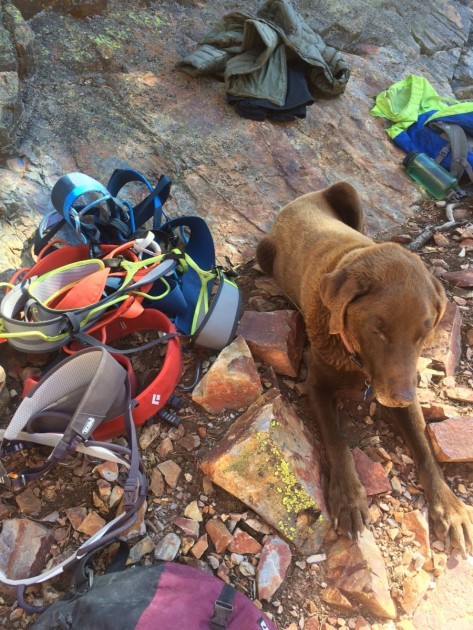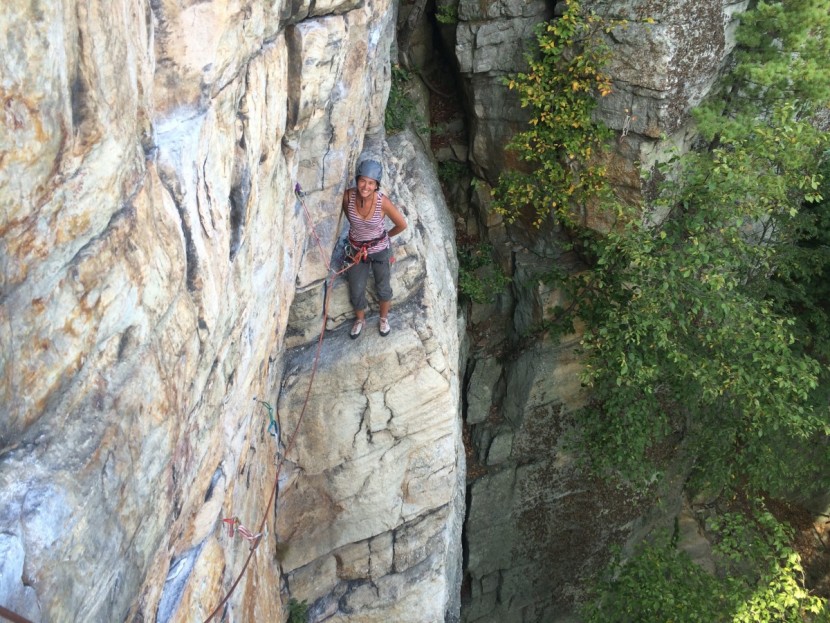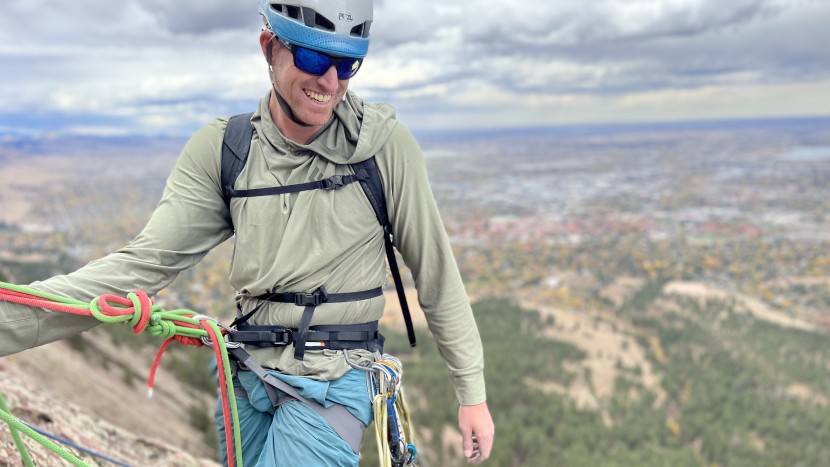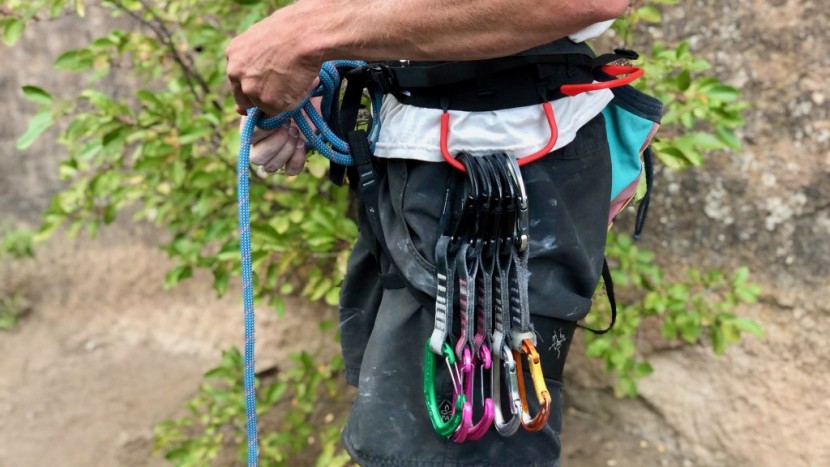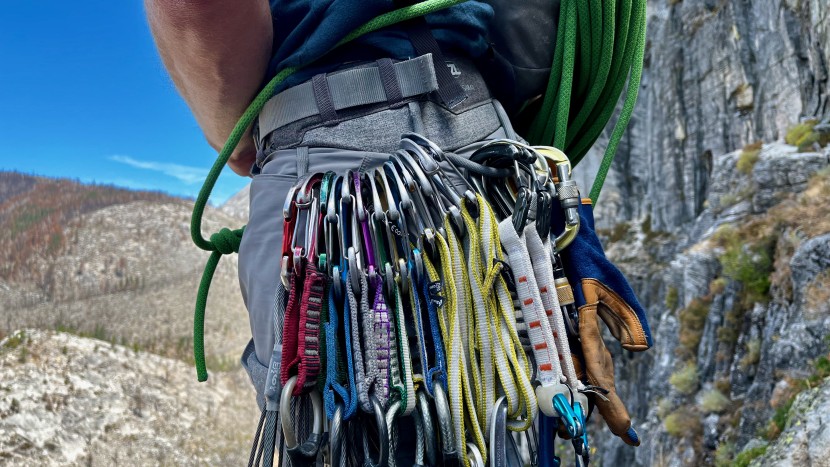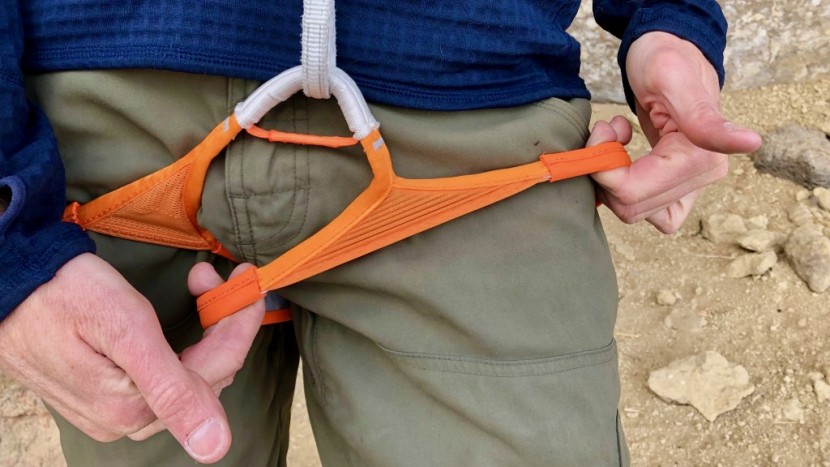We have been testing and reviewing climbing harnesses at GearLab for more than a decade. Many of the models tested have the same name as versions we've tested in the past, although the manufacturers have updated them. We test harnesses pretty much year-round on all of our climbing adventures. In the past few years, we tested at many cool climbing areas, including Smith Rock, Leonidio, Chulilla, the Bugaboos, Squamish, Skaha, the Fins, Lumpy Ridge, and Eldorado Canyon.
The majority of the testing we do is intensive field testing, which in this case means pitch after pitch of rock climbing. The head tester spent many days climbing in each of these harnesses, and we also loaned them out to friends and climbing partners to garner a broader perspective. In some cases, we conducted more objective, side-by-side tests to solidify results and comparative ratings, which are described below. While we do speculate at times as to whether a particular harness will be good for ice or mountaineering, we disclose that we did not test these harnesses for these activities. Where recommendations for specific purposes have been made, they have been based mostly on extrapolations based on the experience of the head tester, who has over 20 years of climbing experience in every discipline. In no case should any of the recommendations made be taken as safety advice, but merely as informed advice for a purchasing decision.
Hanging Comfort
We hung on routes, at hanging belays, and rappelled in each of these harnesses. To test them side-by-side, we set up a mock hang at the base of a crag and spent ten minutes hanging in each harness in a position that mimics a hanging belay or hanging after a fall, one after the other, to gain clearer insight to differentiate the relative comforts of each product. We look for harnesses moving around on the body, uncomfortable pinching feelings, and support while hanging to determine the scores.
Standing Comfort and Mobility
This metric is an amalgamation of many different tests. We wore each model, used them, and took copious notes that led to comparative ratings. We analyzed and compared them while rock climbing, standing around and walking in shorts and a t-shirt, doing the same while wearing pants and a jacket, standing, moving, and climbing with a massive rack on the harness, and also while wearing a climbing pack with the waist belt buckled. This metric is meant to convey comfort at all times when not hanging from the harness.
Features
We identified each feature on each harness and tested them conscientiously while out climbing. We made a note of whether a whole double rack plus water, a jacket, and shoes could fit in the gear loops, how easy or hard the gear was to clip or unclip from the loops, whether the haul loop was easy to clip and unclip, how easy the buckles adjusted and stayed locked in place, and many other such tests of literally every feature available.
Versatility
When assessing for versatility, we first consider how many styles of climbing a harness is suitable for. Harnesses with ice-clipper attachment points and large gear loops can be better used for ice climbing and alpine climbing than ones with tiny gear loops and no attachment points. A secondary consideration is how adjustable the harness is, and a final consideration is weight and bulk. We climbed both sport and trad routes, and if we tested these during a season where we couldn't test a particular style – like ice climbing – we racked up as if going climbing anyway to test how versatile the features were.
Adjustability
We measure the length of adjustment possible in each harness's waist belt and leg loops. We also measure the amount of elastic travel on harnesses with elastic leg loops. We also note the quality of buckles and any other adjustable features.

